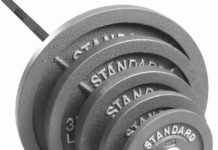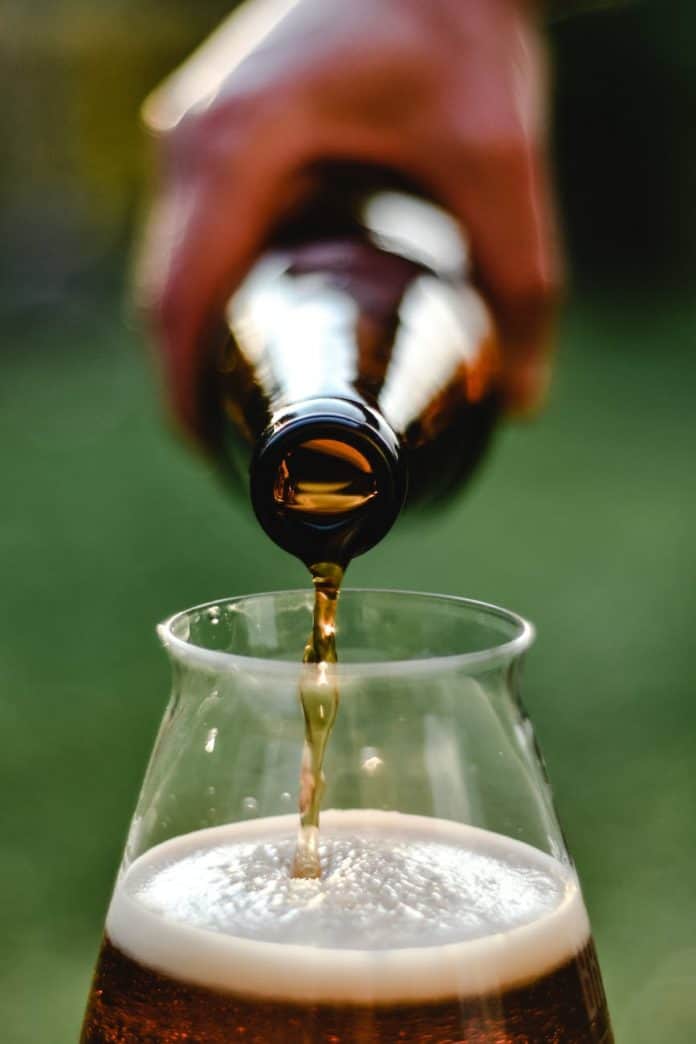Dose Beer Go Bad? Beer is one of mankind’s oldest and most beloved drinks. It has been around for millennia and has famously seen many a boozy night. But even though beer can bring joy, it also needs to be stored correctly or it can spoil! In this guide, we’ll explore some of the myths surrounding beer storage and get to the truth of the matter. We’ll look at things like the types of beer, the best temperature to store it, light and oxygen exposure, humidity and air flow, the “danger zone” temperatures, why you shouldn’t freeze your beer, labeling and dates, and cleanliness.
So, let’s begin debunking the myths surrounding beer storage and make sure you get the most out of your beverage!
Exploring the Myths Surrounding Beer Storage
While the origins of beer are often debated, what we do know is that humans have been enjoying beer for thousands of years. In the ancient world, it was mostly enjoyed as a beverage and was not stored long-term. As time passed, beer storage methods developed, but unfortunately, some myths have also been passed down through generations.
In the age of refrigeration, we have the capability to store beer for longer periods of time. However, many of us still have questions about the best methods for storing beer. To dispel these myths and maximize its shelf life, let's explore some of the key points surrounding beer storage.
Types of Beer
Beer is unique in it's production, taste, and storage requirements. There are a variety of types of beer that all require different storage needs – understanding the nuances between each type can help preserve the flavour and overall quality of the beer.
Lager beers are brewed with bottom-fermenting yeast which produce a clean, crisp and light flavour. By contrast, ales are brewed with top-fermenting yeast that create a sweeter, fruitier flavour. When stored correctly, lagers have a higher shelf life than ales.
Stouts and Porters are both dark beers brewed with roasted barley. They offer a deep, smoky and rich flavour, usually providing notes of coffee and chocolate. Stouts and Porters should be stored in the same way as lagers but should be consumed quickly due to their stronger flavor.
Light beers like lagers and ales are best stored in cold temperatures, however, darker beers like stouts and porters should be stored slightly warmer. To ensure the best flavor, research the manufacturer's recommendations for any beer you plan to store for an extended period of time.
Best Temperature for Storing Beer
Temperature is one of the most crucial elements when it comes to beer storage and can drastically affect the flavor of your beer. When beer is stored in temperatures that are too hot or too cold, it will not taste good. For most beers, the ideal temperature range for storage is between 40-55°F (4-13°C).
Although this is generally considered the best temperature range, different styles of beer will require different temperatures for optimal storage. For example, heavier, maltier beers like stouts or porters should be stored at a much lower temperature than lighter styles such as lagers or pale ales.
It’s also important to note that storing beer in temperatures above 55°F (13°C) can cause the beer to age quickly, leading to changes in flavor. At higher temperatures, the yeast in the beer will work faster and the beer will taste more bitter. On the other hand, storing beer in subzero temperatures can lead to ice crystals forming in the beer, resulting in a somewhat watery taste.
When storing beer, it’s best to find a stable place with a consistent temperature that won’t fluctuate. This will ensure your beer doesn’t go bad and stays tasty for longer.
Light and Oxygen Exposure
Light and oxygen exposure can quickly affect the taste and shelf life of beer. That’s why it’s important to store your beer away from direct sunlight and make sure that the container is sealed tightly so as to not let air seep in. Light, especially UV rays, can quickly cause a beer to become skunky and lose its freshness while oxygen can cause the beer to become stale.
The best way to avoid any oxidation that could occur due to air exposure is by using cans or bottles with resealable caps. This will help keep the beer fresh longer, giving you more time to enjoy it at its peak.
You may have noticed that some beers come with an expiration date. While there are no hard-and-fast rules to how long your beer will last, chances are that if you open a beer past its expiration date, it will likely taste stale unless it had been properly stored.
Humidity and Air Flow
Beer should be stored in an environment with low humidity and good air flow. This is because higher humidity results in off-flavours and yeast stuck in suspension, while bad air flow can also cause oxidative flavours.
Ideal humidity levels for storing beer should be between 50-60%. If the humidity is too low, it can cause your beer to become dry and thin. Too high, and it can cause caramel notes that take away from the intended flavour of the beer.
When it comes to air flow, store your beer where there is minimal movement of air, as oxygen can affect the flavour profile of the beer. For example, oxygen can give beer a metallic taste when exposed for too long.
Keeping your beers stored at the correct humidity and air flow is key to ensure the flavour is not compromised.
The Danger Zone – Storing Beer at the Right Temperature
All beer should be stored in a cool and dark place away from direct sunlight. However, certain types of beer require specific temperatures to ensure the best tasting product and to maintain a longer shelf life. Different styles of beer need to be stored at different temperatures to avoid their flavor becoming compromised. Lagers and light ales should be kept at colder temperatures, around 45-50°F (7-10°C), while darker ales and stouts are best served cooler at 50-55°F (10-12°C). Certain flavorful craft beers can even be stored at warmer temperatures, such as 63°F (17°C). It’s important to note that the warmer the temperature, the faster the beer’s shelf life will expire.
In order to make sure your beer tastes as good as it did when first botted, it’s essential that it is stored properly. If you’re looking for the perfect temperature to store your beer, the “danger zone” is what many brewers refer to. This range, between 40-140°F (4-60°C), is considered the danger zone. Storing your beer in this temperature range can cause bacteria to grow and create an off flavor. It can also cause the hops to degrade, resulting in a flat and stale tasting beer. To avoid this, always make sure that you’re storing your beer below 40°F (4°C) and above 140°F (60°C).
When it comes to beer storage, it is best to keep things simple. By learning about the ideal temperatures for each beer type and how they can be affected by light and oxygen exposure, you can ensure that your beer will stay fresh and delicious for longer. It’s also important to remember that the warmer the temperature, the more quickly your beer's shelf-life will expire. So pay close attention to your beer storage environment, and you won't have to worry about drinking bad beer again.
Do Not Freeze Beer
We’ve all heard the old adages about storing beer in the freezer – that it’ll make it last longer or even taste better. Well, it turns out this isn’t true and freezing beer is actually bad for it. When beer is frozen, the carbonation and flavour are negatively affected which can result in a flat tasting beer.
Besides changing the taste of beer, freezing tends to cause the beer to expand and burst out of its container. This is because the water in the beer freezes and expands, so the container cannot contain it anymore. Over time, this will result in a lot of wasted beer, which nobody wants!
Just as warm temperatures can lead to off-tasting beer, so too can cold temperatures. So, it’s important to keep your beer at the right temperature if you want to ensure the best taste and the longest shelf life possible.
There's no need to worry about shelf life when it comes to beer, as long as you're aware of the labels and dates on the bottles and cans. It's important to be able to correctly interpret these labels and dates, so you can select the best beer for you and store it accordingly. When shopping for beer, you may come across different date formats. On cans and bottles, the manufacturer will often indicate the beer’s “born-on” or “brewed-on” date. On other types of beer, such as craft brews, you may see a “best before” date, which indicates how long the beer can be stored and still retain its taste. Other beers may even feature a “bottled-on” date, which is the date they were bottled. All of these dates are helpful to consider when selecting beer for storage. In addition to these dates, it’s also important to pay attention to the other labels on the beer. They can provide insight into the style of beer, the alcohol content, and any other special ingredients added during production. By carefully looking at these labels and dates, you can determine whether or not a particular beer is worth storing. Once you’ve found the right beers for your needs, you can store them correctly in order to keep their flavors intact for the longest possible time.
Cleanliness
In order to store and serve beer properly, keeping everything clean is essential. Beer needs to be kept away from dust, other beverages, and food as these can all taint the taste. Bacteria can also affect the flavor of beer, so it’s important to ensure that all surfaces are regularly cleaned and disinfected. Additionally, poor sanitation can lead to contamination with other substances, which can ruin a good beer.
Keeping kegs clean is particularly important as mold and bacteria can grow in the dip tube or hoses of an unpreserved system. If left unchecked, this can spoil the beer and contaminate beer lines, pumps, and faucets. A thorough cleaning regimen should be established to avoid these problems. Be sure to rinse all kegs out with hot water and an appropriate beer line cleaner before filling them up with fresh beer.
In addition, proper storage of beer bottles can also help prevent the growth of bacteria. Only open the bottle when you are ready to drink it and always store it upright in a cool, dry place. This will preserve the integrity and flavor of the beer, while eliminating any risk of contamination.
Conclusion
By now, you should have a better understanding of the myths surrounding beer storage and be able to debunk them. To ensure the best taste and shelf life of beer, it is important to store it between 32–41°F in darkness, away from direct oxygen exposure and with humidity control and air flow.
Additionally, pay attention to labels and dates on the bottles for a more precise expiration date and freeze the beer only as a last resort. And finally, keeping your beer storage and dispensary clean will help prevent spoilage and lead to a longer shelf life.
Cheers to proper beer storage and great tasting beer!
FAQs
There are many questions that arise when it comes to beer storage and shelf life. Let’s take a look at some of the most frequent queries.
- How long can beer be stored safely?
- Is it safe to drink beer past its expiration date?
- What is the best temperature for storing beer?
- Does light exposure affect the taste of beer?
- Can beer be frozen? What will happen if I do?
- What is the danger zone for beer storage?
- How do I know if my beer is bad?
- Should I store my beer upright or on its side?
The length of time that beer can be stored safely depends on the style of beer as well as the storage techniques used. Generally, lagers and light beers have a shorter shelf life than ales and darker beers. It is not advisable to drink beer after the expiration date printed on the label, as the flavour and appearance may have changed drastically due to improper storage. To prevent spoilage, it is best to store beer in a cool, dark environment at temperatures around 40-45°F (4.5-7.2°C). Light exposure can cause a chemical reaction that leads to skunking, a process that turns the beer bitter and unpleasant. Freezing beer can cause permanent damage to its flavour, texture, and aroma, so this should be avoided. The “”danger zone”” for beer storage is between 40-140°F (4.4-60°C) as these temperatures speed up spoilage. Beer that has gone bad is usually identifiable by an off-putting aroma, an unpleasantly sour taste, and a cloudy appearance. It is recommended to store beer upright unless it has been corked or bottled in champagne-style bottles, in which case it can be stored on its side to preserve the cork.
















